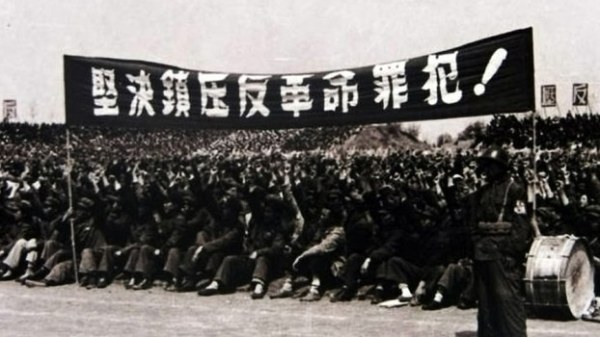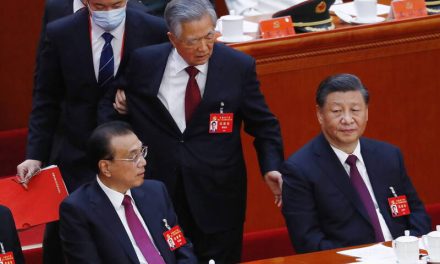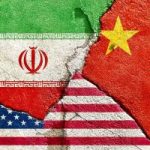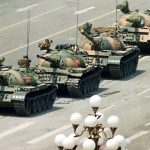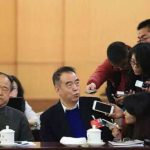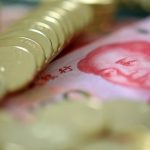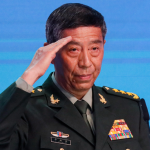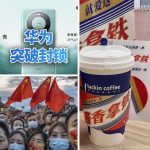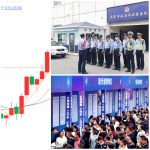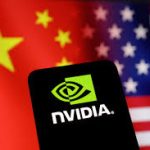By Bai Ding
Introduction
Among all Chinese contemporary political terms, the one that has had the greatest impact on the direction of the country and the people’s livelihood is “reactionary,” which has been a term of abuse by the CCP. The CCP uses the discourse it controls to deliberately distort and extend the original meaning and scope of use of this word. After a century of indoctrination by the CCP, the people have naturally and semantically come to equate in what they see, hear and read with progress and justice, and regard ideas that are different from its ideology as things to be eradicated, as scourges.
However, we can see that throughout the CCP’s century-old history, whatever it does is done precisely to achieve its ultimate goals of seizing and permanently controlling state power. It is in other words to these ends that it has put its rhetoric, its brainwashing, its suppression and intimidation, and its custom-tailored legal provisions.
The use and evolution of the word “reactionary” in the CCP’s rhetoric
I have previously written [in Chinese] on this theme in my article “On ‘Reaction’ in Chinese Communist Party Language.”
The word “reaction” is a political/sociological term that means opposition to “progress,” and took shape in Europe and America. It is now widely used around the world. The two words refer to two opposing attitudes towards the process of historical development.
The meaning of the word “progress” is easy to understand, referring to the transformation and development from out of tradition. The original meaning of the word “reactionary” refers to the ideological and political tendency that opposes extreme changes and strives to return to tradition. When used together with the word “progress,” the word “reactionary” often has an obvious negative connotation, and its meaning is similar in Chinese to the words conservative, traditional, right-wing, etc.
However, in the China under the control of the CCP, the meaning of the word “reactionary” has been distorted in an extreme direction and taken far from its historical meaning. The term itself has become a unique Chinese term that places those who use it above the law, a most convenient and universal judgment that can be against any group or individual.
The straightforward purpose of the CCP’s manipulation of the word “reactionary” has always been to condition public opinion for a series of subsequent campaigns and even massacres. Before and after the founding of the People’s Republic of China, the CCP through its extensive and continuous abuse of the word successfully disguised itself as the embodiment of progress and justice, and attached the odium of the term to all differing ideas and voices. The CCP severely punished groups and individuals so designated, with punishment ranging from various lesser forms of violence to outright physical elimination.
Mao Zedong’s “suppression of reactionaries’ troublemaking,” proposed by him in Peking on June 15, 1949, was the last official nationwide campaign of targeting of and purge by the CCP against so-called “reactionaries.” After it came to power in 1949, the frequency of use of the word itself decreased significantly. But this does not mean that China subsequently had any magnanimity toward “reactionaries.” On the contrary, the CCP subsequently used the word “counterrevolutionaries” to replace “reactionaries.” After its triumph, the CCP brutal’s slaughter of “counterrevolutionaries,” who were the successors of the “reactionaries,”dwarfed the killings of “Kuomintang reactionaries” by the CCP on the battlefield before 1949.
Take this CCP’s “suppression of reactionaries’ troublemaking” as an example.
Shortly after the CCP came to power, its Central Committee, the Chinese Government Affairs Council and the Supreme People’s Court issued “Instructions on Suppressing Counterrevolutionary Activities” in July 1950. “Suppression of counterrevolutionaries” replaced “suppression of reactionaries,” but the target of suppression was not limited to the Kuomintang reactionaries, but also extended to all strata of society. “The remaining counter-revolutionary forces left by the Kuomintang reactionaries on the mainland, the disintegrated armed forces, various spies, key members of the reactionary party groups, leaders of reactionary gangs in urban and rural areas, bandit bullies and other reactionary forces” all became targets of suppression, and “suppression” meant elimination.
According to different figures published by the CCP itself, the number of people executed during the three-year crackdown on counterrevolutionary movements was: (1) 712,000 (Source: Ministry of Public Security of the People’s Republic of China, 1954); or (2) 1.576 million (Source: Central Party of the Communist Party of China “Facts of Historical and Political Movements since the Founding of the People’s Republic of China,” co-edited by four departments including the Historical Research Office, 1996). For reference, during the three-year civil war between the Kuomintang and the Communist Party from 1946 to 1949, the number of Kuomintang troops killed by CCP troops on the battlefield was about 300,000, which was less than one-fifth of the number of people killed in the CCP’s three-year suppression of counter-revolutionary movements. The campaign of killings after the founding of the Communist Party of China was blood-soaked and vicious.
The “suppression of counterrevolutionaries” movement was regarded by the CCP as one of its important achievements after the founding of the country because of the huge number of “counterrevolutionaries” massacred. Although the Reign of Terror during the French Revolution was also done in the name of eliminating “enemies of the revolution,” its toll in blood pales in comparison next to that of the CCP’s three-year “suppression of counterrevolutionaries.”
However, this movement was only the beginning of the real slaughter after the CCP came to power. The CCP had already made sufficient theoretical and public preparations for long-term and continuous massacres. In an editorial on February 27, 1951, titled “Why counterrevolution must be resolutely suppressed,” the People’s Daily of the Communist Party of China told the people why it must happen, in a long-term, sustained manner: “Counterrevolutionaries must be completely eliminated, and it cannot be done quickly. It can be achieved, but it can be reckoned that this will be a very long-term and arduous struggle.” [“Why Counterrevolution Must be Resolutely Suppressed,” in Chinese, link is to text of editorial on Chinese government website.]
And the CCP kept its word. The various campaigns that were carried out simultaneously with the suppression of the counter-revolutionary movement or subsequently launched included:
The “Land Reform Campaign” carried out across the country (1950-1953): its slogan was “Everyone who owns land is rich, and they are all evil.”
The “Three Antis” and “Five Antis” combined campaigns (December 1951 to October 1951): the slogan was “oppose bribery, oppose tax evasion, oppose theft of state property, oppose cutting corners, and oppose theft of national economic intelligence.” The main targets were industrial and commercial capitalists.
The Anti-Rightist Campaign (1957-1958): Old ideas and habits of bourgeois elements and intellectuals became the targets of this campaign.
The Commune Movement and the Great Leap Forward (1958-1961): peasants who had supposedly just been emancipated became the targets of another movement.
The Cultural Revolution (1966-1876): the earlier targets grew from particular groups in society grew to all of it.
After the end of the Cultural Revolution, political campaigns continued: the suppression of the “Xidan Democracy Wall” in Beijing in 1979, the mandatory one-child policy in 1980, the “Opposition to Bourgeois Liberalization” movement in 1987, the purges after the Tiananmen massacre and the resultant subsequent nationwide ideological-study movements, the persecution of Falun Gong, the current nationwide movement to study Xi Jinping’s governing philosophy, on and on.
In all the movements listed above, in addition to using the traditional designations of “reactionary” and “counter-revolutionary,” the CCP also continuously created various new slogans to describe the campaigns’ targets, such as “you have brought this on yourself” and “you are getting your just deserts.” In the eyes of the public, these people who are targeted for attack naturally become agents of injustice and evil. The new strategies of these movements are variations on the CCP’s traditional anti- “reactionary” and anti-“counterrevolutionary” labeling strategies, and their effects are exactly the same.
In each of the aforementioned campaigns, the targets that the CCP wanted to attack were no longer termed “reactionaries.” However, the suppression methods and the degree of cruelty used against these targets were similar to those used against reactionaries in the early days of the founding of the People’s Republic of China. Repression continues in the same manner.
According to official Chinese figures, from the founding of the People’s Republic of China in 1949 to the end of the data in 1996, the number of abnormal deaths caused by the above-mentioned various campaigns was 44 million [“Facts of Historical Political Movements since the Founding of the People’s Republic of China” (1996), CCP, co-edited by four departments including the Central Party History Research Office]. Western scholars and Chinese unofficial researchers believe that the actual death toll is much higher.
It is worth emphasizing that although the two labels “reactionary” and “counterrevolutionary” have not been used in recent campaigns to mobilize public opinion in the CCP’s large-scale repressive campaigns, the charge of “counterrevolution” is still the most authoritative and intimidating charge the CCP can make, the trump card of its strength. The most famous examples of the use of this crime include Mao Zedong’s assistant Lin Biao and Mao’s widow Jiang Qing, who were tried on different occasions as the chief offenders of “counterrevolutionary groups.” The “Democracy Wall Controversy” in Beijing in 1979 was labeled a “counterrevolutionary activity.” The pro-democracy movement of 1989 was characterized as a “counterrevolutionary riot.” During the Cultural Revolution, at least 130,000 people were sentenced to death for counter-revolutionary crimes [Cao Changqing: “The unforgivable record of murders since the founding of the Chinese Communist Party!”, in Chinese]. The representative figures among those murdered were Lin Zhao and Zhang Zhixin.
After 1997, while Chinese criminal law no longer included a “counterrevolutionary crime,” the CCP only changed “counterrevolutionary crime” to “subversion of state power” and “counterrevolutionary propaganda crime” to “inciting subversion of state power,” under which names it continues to be used to deprive citizens of their constitutional rights to freedom of association and expression.
Through the CCP’s public-opinion machinery, the terms “reactionary” and “counterrevolutionary” have been deeply implanted in the minds of the Chinese people, and they still dominate people’s political, social and value judgments there. Even today, when faced with ideas and speeches that are different from the official narrative, many people will still blurt out judgments such as “really reactionary” and “this is counter-revolutionary speech.” What is even more worrying is that these two words are not only spoken by the elderly, who have experienced various campaigns, but also by young children who are not familiar with CCP history and have learned the terms from their parents, grandparents and media discourse. They thus use these two terms automatically and instinctively.
“Reactionary” and “counterrevolutionary” have become specific symbols of Chinese Communist Party culture.
The CCP is actually China’s biggest counterrevolutionary organization
After more than a hundred years of practice molding public opinion and outright indoctrination, the CCP has successfully shaped itself in the consciousness of the Chinese public as the embodiment of justice and progress. However, a series of major events that occurred in contemporary China after 1949, from the “Three Antis and Five Antis” to the “Anti-Rightist” period, from the “Xidan Democracy Wall” period to today, all prove that the CCP’s singing of its own praises is ever a lie.
Since the United States’ Declaration of Independence in 1776, striving for and safeguarding equality, freedom and human rights have become a major trend in the world. Even totalitarian countries such as the former East Germany and North Korea do not forget to add the modifier “democracy” to their countries’ names. However, in China under the rule of the CCP, the public’s aspirations and actions for democratic rights are regarded as criminal acts by the CCP authorities and suppressed. Not long ago, a woman in Beijing was arrested by the police for distributing words from the U.S. Declaration of Independence in public. Today, when the call for freedom and human rights is ringing around the world, the CCP has proven its unjust nature through its fear of and hostility toward freedom and human rights.
Chinese society experienced a long era of cruel literary inquisition during the Ming and Qing dynasties. The late Qing Dynasty and the Republic of China once brought the dawn of free speech to China. But after the CCP came to power, this glimmer of hope was wiped out, replaced by censorship and persecution of writers that was even more cruel and terrifying than during Ming and Qing times. What the CCP is doing is not a return to tradition, but bringing Chinese society back to the darkest period in its modern history.
After two thousand years of hereditary imperial rule, the political system of Chinese society finally broke away from the imperial system 100 years ago and established Asia’s first republican system, the Republic of China. However, after the founding of the People’s Republic of China, the CCP controlled power and turned the former imperial world into today’s one-party world. And they want this world to continue by passing it on on to their red descendants. Yuan Shikai once tried to restore the imperial system, and his short-lived 82 days as self-proclaimed emperor were nonetheless called a “restoration” by political scientists. The CCP has been in power for more than 70 years, which surely qualifies as for the same word.
There were periods of collective leadership within the CCP, but it was ultimately dominated by Mao Zedong, who became the de facto dictator of the party. After the Cultural Revolution, the CCP abandoned one-man dictatorship and returned to collective authoritarian leadership. Today, after 40 years of reform and openness, power within the CCP has been consolidated by Xi Jinping. The CCP has thus once again turned from a collective authoritarian system to a one-man dictatorship. From this perspective, the CCP has neither embarked on the path of progress by embracing freedom and democracy, nor has it retained the past party-state model with its internal checks and balances. Instead, it has made strides back to the quasi-imperial model of one-man dictatorship.
If we take as a point of comparison the French word réactionnaire used during the French Revolution, which meant “the desire to restore the old royal order,” it is the CCP that is the largest reactionary group trying to restore contemporary China to the hereditary rule of one party and one person.
If we compare the contemporary Western definition of the word “reactionary,” “opposed to political or social changes or new ideas,” then the CCP’s severe suppression of China’s ideological and social development has undoubtedly has positioned it as the biggest reactionary force hindering China’s progress.
Even using China’s own official definition of the word “reactionary,” i.e. “behavior and speech that is contrary to the direction of historical development,” the actions of the CCP since 1949 have shown that the CCP is hindering tolerance and the opening up of Chinese society, and thus is the real reactionary force that blocks China from taking the proper path of democracy and freedom.
The American President Biden recently called Xi Jinping a “dictator,” which is indeed a direct reference to the nature of the CCP and Xi Jinping.
The sole path to China’s democratic transformation
Since 1949, the CCP has forced China to undergo a comprehensive cultural, social and political regression in the name of “suppressing reactionaries.” This regression is not a return to tradition, but a rejection of progress while destroying all the good parts of Chinese tradition, allowing the ugliness and evil within it to spread unchecked.
In order to initiate democratic transformation and achieve true democratic constitutionalism in China, to help the Chinese public understand the nature of the CCP’s obstruction to China’s social progress, elimination of CCP culture, with true reaction and counter-revolution as its core characteristics, is foundational.
Referenced article《白丁 | 论中共话术中的“反动”》https://yibaochina.com/?p=252479

